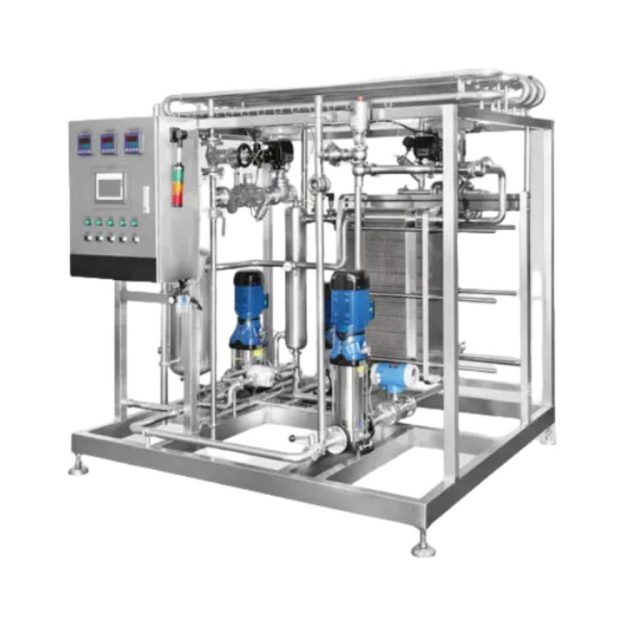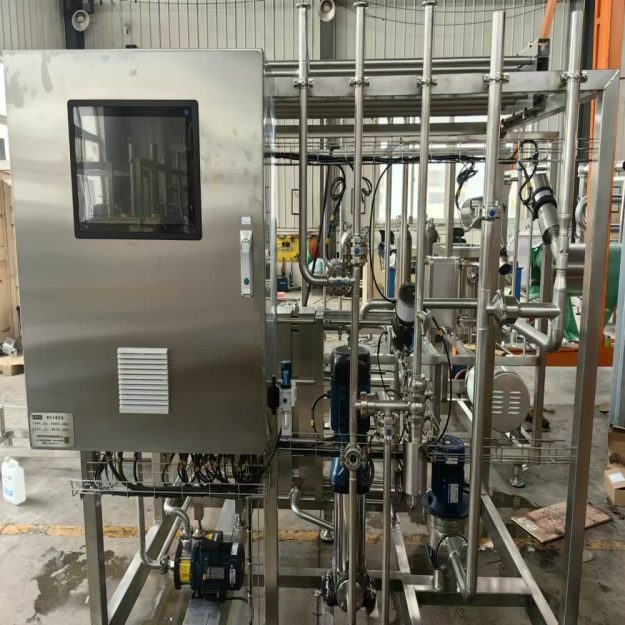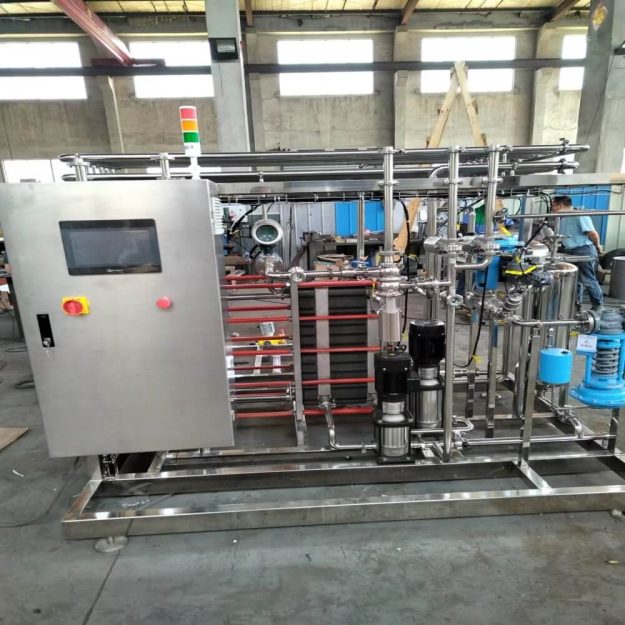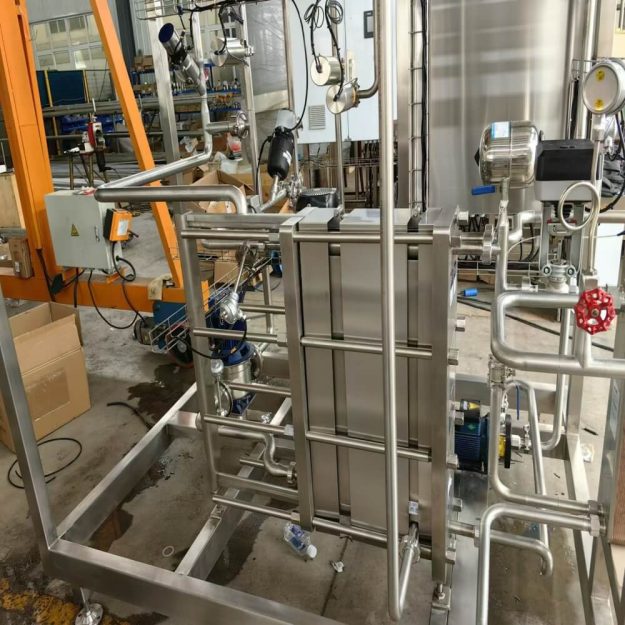Automatic Continuous Instant Sterilizer
Purpose of this equipment: Mainly for pasteurization of beer, soft drinks, other beverages and other products
Specifications
| Steam | pressure ≥0.60Mpa, connected to the heater inlet |
| Beer | maximum flow rate 1T/h, pressure>0.15Mpa |
| Sterile water | temperature 15 ~ 25 ºC; pressure>0.2Mpa, connected to the water supply port; |
| Refrigerant flow | 3~4 T/h pressure: 2.5bar; inlet temperature: -4ºC; |
| Electricity | total installed capacity: 5kw; required to be connected to the power inlet of the distribution board |
Video

Description
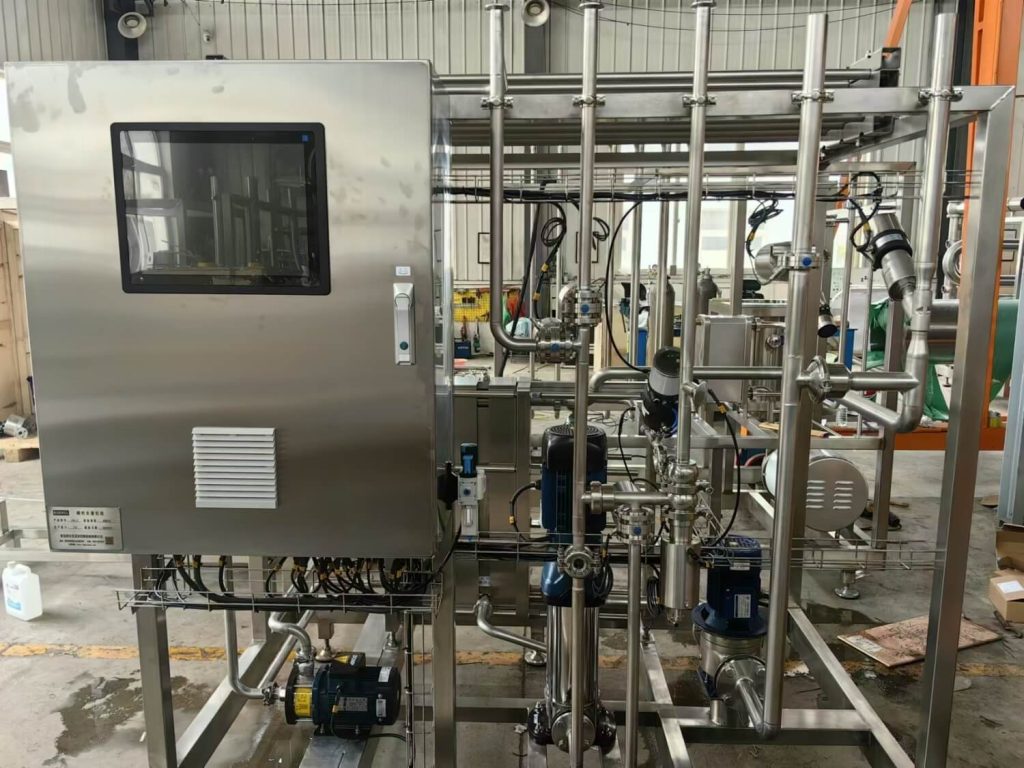
Design and selection of key component plate heat exchanger: Use all-stainless steel plate heat exchanger of famous foreign brands.
Fully automatic control system (using Siemens S7 300 control system + 10-inch color touch industrial computer).
1 Multi-channel temperature control of the whole equipment: beer heating hot water temperature, unit sterilization temperature, finished product instantaneous sterilization temperature, product cooling; temperature detection accuracy is about ±0.02℃, hot water indirect heating is used to ensure that the sterilization temperature is stable when the steam supply pressure is unstable;
2 System pressure control: at a high temperature of 73 degrees, ensure that CO2 will not escape;
3 Operation control: filling, equipment sterilization, production, circulation, emptying, CIP;
4 PU control: automatic control of flow and temperature, not only displays the sterilization unit of the current system, but also realizes the interlocking control of flow and temperature, and realizes constant control of PU value;
5 Product safety: the system and the filling line keep running synchronously, which not only saves CO2, but also ensures the microbiological status of the finished cans. If the system has an alarm condition (insufficient steam, filling machine failure, insufficient wine supply flow, etc.), the system will immediately use sterile water to automatically push the wine out of the system to prevent the wine from being over-killed and the dead yeast from settling in the heat exchanger, affecting the quality of the wine.

